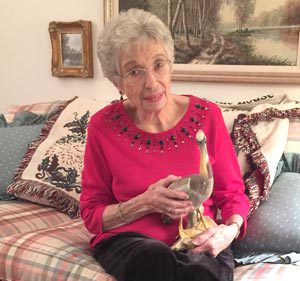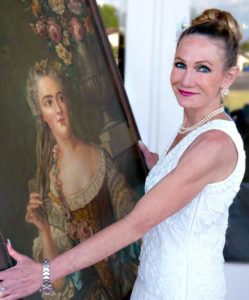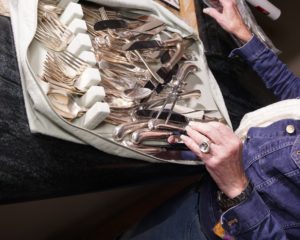 At the end of a season I get calls from clients, “How do I act as an executor when it comes to personal property?” Or, “How do we divide up an estate now that our parents are gone?” Now we enter into autumn, and I want to advise YOU on some tips for dealing with Heirship Issues. Before we start, the BEST way to prepare is ask the people in your family to write a list of WHO GETS WHAT —-NOW! But few people prepare this way. Let the kids have the headache.
At the end of a season I get calls from clients, “How do I act as an executor when it comes to personal property?” Or, “How do we divide up an estate now that our parents are gone?” Now we enter into autumn, and I want to advise YOU on some tips for dealing with Heirship Issues. Before we start, the BEST way to prepare is ask the people in your family to write a list of WHO GETS WHAT —-NOW! But few people prepare this way. Let the kids have the headache.
Firstly, you inherit a whole household of items, and you may feel dismayed with the amount of STUFF left to your care. Put objects into categories.
I like to call this my FIVE PILE theory:
- What to Donate
- What to Sell
- What to have an expert LOOK AT
- What Heirs might WANT
- What to keep because it MIGHT go up in value.
 USE your cell phone to take pictures of each category in GROUPS. If anybody questions your decisions afterwards, you have some photos to fall back upon.
USE your cell phone to take pictures of each category in GROUPS. If anybody questions your decisions afterwards, you have some photos to fall back upon.
People often ask me to visit a household shortly after someone passes, and the process of an ESTATE Administration has begun. Usually this involves a TRUST, and the executor becomes the responsible party. Of course, experts can help – the estate attorney, an expert in valuation like me, and a professional fiduciary. Still the process feels HARD.
If you’re the person in charge of dividing up the material possessions of an estate, the procedure may turn into an ordeal. You decide HOW to do this. Here are some of the methods my clients have tried. I say tried, because sometimes they DON’T work well. Each family is different, yet I find that when the division involves MONEY and SENTIMENT, family communications can break down, even in the most amenable of families.
Methods and Techniques for HEIRS
Have someone like me help you to pinpoint the top 20 objects of greatest value in a household, in terms of dollar figures TODAY. Forget about sentiment and family related valuables such as portraits and photos. Just deal with the money end. Let’s say there are four siblings, like in my family. Clients of mine have decided to have a round robin of CHOICES, based on age, or based on a random drawing of straws, or numbers, until the top 20 valuables are spoken for. Then do the same with the next tier of value. Do the same with the nebulous category called personal sentimental stuff!
Another method I use
 Ask a valuation expert like myself to write a “blind” appraisal (without dollar figures) of the top items in the home. Ask each of the – let’s say – four of you, to list, in order of personal desirability, the objects each really wants. Now you need a judge, because invariably, two sibs want the same objects. IN ADVANCE, determine the judgement characteristics – how you will go about the distribution of the objects, in WRITTEN DETAIL. Get sibs to agree on this, if you can, in advance. Agree on one trusted expert in valuation as the person who determines the DOLLAR FIGURE of things.
Ask a valuation expert like myself to write a “blind” appraisal (without dollar figures) of the top items in the home. Ask each of the – let’s say – four of you, to list, in order of personal desirability, the objects each really wants. Now you need a judge, because invariably, two sibs want the same objects. IN ADVANCE, determine the judgement characteristics – how you will go about the distribution of the objects, in WRITTEN DETAIL. Get sibs to agree on this, if you can, in advance. Agree on one trusted expert in valuation as the person who determines the DOLLAR FIGURE of things.
In many families, the ‘pecking order’ is by AGE, or, by CHANCE drawings of numbers. In the cases of a tie, it is always difficult to determine who gets what, if a judgement characteristic is not AGREED ON, in advance.
Another great method within a family that GETS ALONG is to go around the family table. One sib is chosen to go first, selects something, and then the next. No one is allowed to complain. That is very difficult!
Finally
No magic solution exists for calmly coming to an equitable distribution of the objects. In an ideal world, each sib receives the same amount, in dollar figure VALUE. This rarely happens. Another solution involves selling all or some of it, then divide up the money. I’ve NEVER seen that technique go as smoothly as it sounds. One sib will always remember that ONE object. In this case, ALL PARTIES must imperatively agree on the seller because maxim value only comes by selling in the RIGHT market.
Many families ask a valuation expert to write an appraisal, and if many things are earmarked for sale, one sib may BUY the object from the estate. For this technique, we do not use the REPLACEMENT COST OF THE OBJECT AS LISTED ON AN INSURANCE SCHEDULE, and we also do not use hearsay. For example, someone saw THIS on the Antiques Road Show and that something is worth $5mill… We use FAIR MARKET VALUE, WHICH IS DEFINED AS THE MOST common PRICE paid, in the most APPROPRIATE MARKETPLACE.
That means thrift store level objects are assigned thrift store prices, and auction level items, auction prices. We NEVER use retail for this type of valuation. If you can imagine, the second- hand market is usually a good indicator of Fair Market Value. We use that valuation for ESTATES.
If you have any questions about this process, please feel free to email me with your thoughts and questions. I don’t charge for my insights.
Pingback: Giving Objects to Heirs - Elizabeth Appraisals
My family is very lucky, based on your assessments about inherited things. I am one of six siblings. My mom left a decent amount of money and things. The money she divided according to how much she had spent bailing out certain ones of us (e.g. me over an unpaid student loan), thus giving some of us more money than others. No one said a word of complaint as we all saw that it was fair. And no one fought over the chaise longe, even though several of us would have liked it. I do not even remember how it landed with one of my sisters and not another. And so forth with all of mom’s stuff. It looks like the results of good parenting can come out at times like these. It makes me appreciate my long-gone parents more than ever. And it makes me wish I had realized it early enough to let them know while I still could.